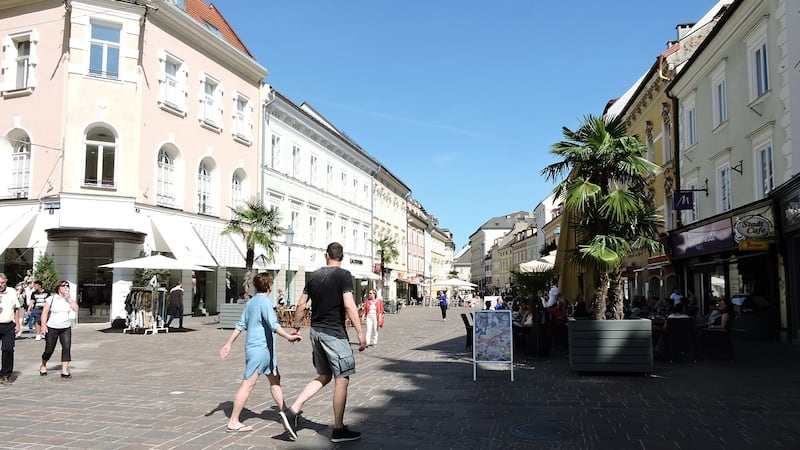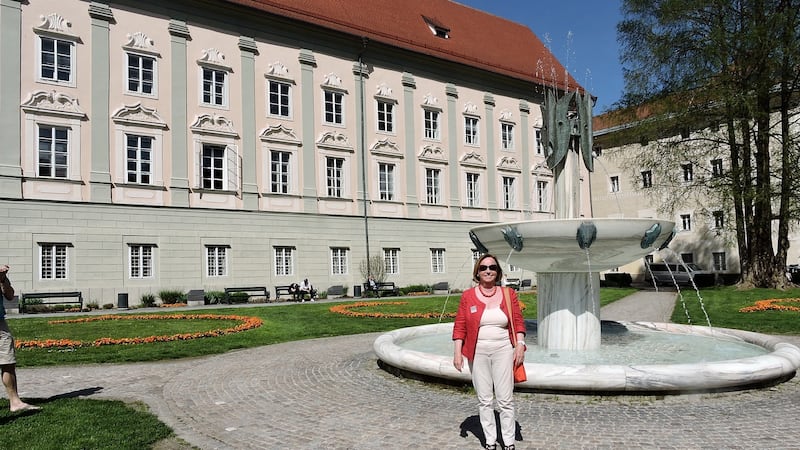Originally from Co Tyrone, Patricia Gerlich lives in the town of Klagenfurt in the south of Austria, close to the border with Slovenia and Italy, where she works as an official tour guide.
Klagenfurt is celebrating 500 years as the capital of Carinthia, which Gerlich describes as “Austria’s Donegal”.
Where is the first place you bring people when they visit Klagenfurt?
I bring my guests to Alter Platz, which was the main thoroughfare in the town built by Duke Bernhard of Spanheim in the 13th century. The layout is the same today. The houses, from the 17th to 19th century, are representative buildings of the period; many of them have beautiful courtyards that you can visit. Flowers cascade from the arcades in summer.

The top three things to do there, that don’t cost (much) money, are . . .
Sip a coffee or enjoy a glass of wine at one of the cafes on Alter Platz. If you have a sweet tooth, you can try a delicious piece of cake and watch the world go by. In autumn, you can enjoy freshly roasted chestnuts sold at stands. In winter, enjoy a glass of mulled wine.
Visit the cathedral (Dom) built at the end of the 16th century, the interior completely covered in stucco. Don’t be put off by the nondescript exterior. The interior is baroque. You may even hear someone practising the organ for the next concert. In July and August, masses by Schubert, Haydn, or Mozart can be heard at 10am every Sunday.
Near the cathedral, there is a model of the town of Klagenfurt – as it looked at the end of the 16th century with walls and a moat. Check which buildings remained the same through the centuries, and which part of Klagenfurt is the oldest. You won’t find the walls today; they were destroyed by Napoleon’s army 200 years ago on his rampage across Europe.
Walk up the 225 steps to the lookout point of the main parish church (St Egid) with great views over Klagenfurt and the countryside including the Karawanken mountains separating us from Slovenia. This costs €4 for adults and €2 for children with reductions for students or pensioners, for example. The guide at the tower, Horst Ragusch, will be happy to explain everything to you in English, German, French, Italian or Slovene.

Where do you recommend for a great meal that gives a sense of Klagenfurt?
An ideal place for a good meal is the Schweizer Haus on a rise above Klagenfurt. Take the number 50 bus or a taxi. You could even walk if it is not too hot. From the terrace of the restaurant, you have a great view of Klagenfurt and the cuisine is excellent. Try Käsnudeln, ravioli-style cottage cheese dumplings served with salad – this is the traditional dish here in Carinthia. The Carinthians are lucky in having culinary influences from the former Hapsburg Empire – Hungarian, Viennese, Slovenian, as well as Italian cuisine.
Where is the best place to get a sense of Klagenfurt’s place in history?
The best place to get a sense of Klagenfurt’s history is the Neuer Platz with its town hall, statue of Maria Theresia, and the Lindwurm, the dragon that is the symbol of Klagenfurt. The Neuer Platz was constructed in the 16th century when the town was newly laid out by an Italian town planner, Domenico dell’Allio.
For what should visitors save room in their suitcase after a visit to Klagenfurt?
For presents, go to the the Heimatwerk in the Herrengasse. There you will find beautifully handmade gifts, made locally or in other parts of Austria, or buy some handmade chocolates or Mozartkugeln, filled with delicious marzipan, or other delicacies from Zehrer on Alter Platz.




















